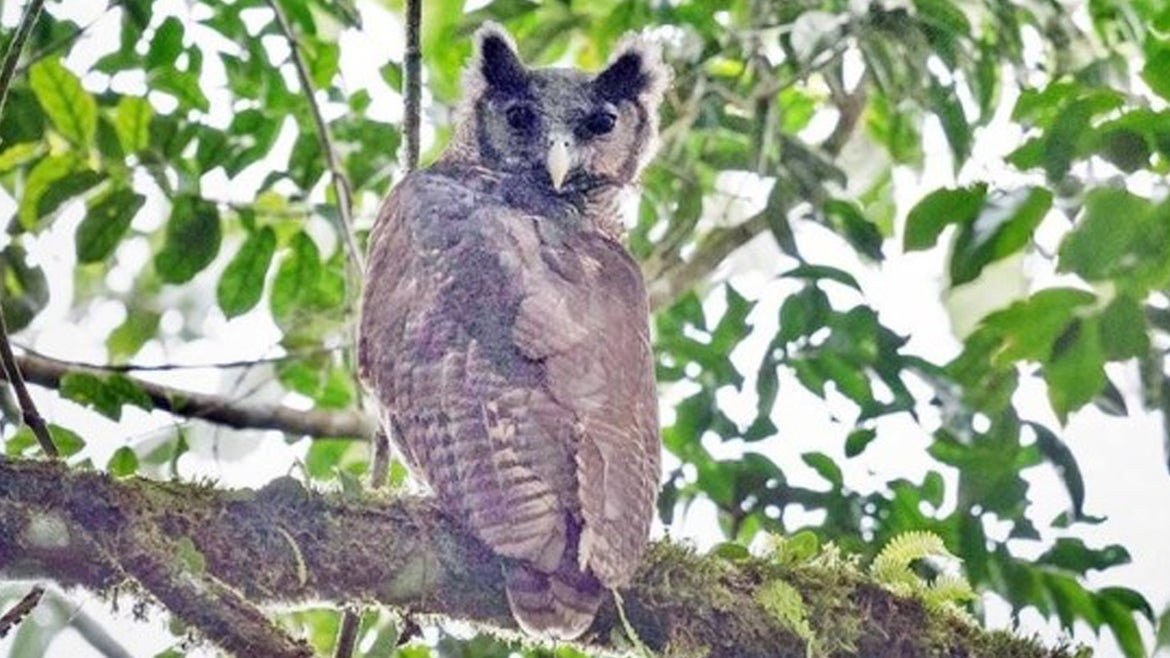The Shelley's eagle owl was spotted in the Atewa forest in Ghana for the first time since 1872. The only other known photograph of the bird of prey was blurry and taken at a zoo in 1975.
A giant owl at risk of extinction was spotted in an African rainforest for the first time in more than 150 years. The rare Shelley’s eagle owl, observed by British researchers working in Ghana, hasn’t been seen in the wild since the 1870s, with the only other existing photograph a blurry image taken in a zoo in 1975.
“It was so large, at first we thought it was an eagle,” said ecologist Dr. Joseph Tobias, according to a statement. “Luckily it perched on a low branch and when we lifted our binoculars our jaws dropped. There is no other owl in Africa’s rainforests that big.”
He and colleague Dr. Robert Williams had been in the Atewa forest when they disrupted what they thought was an enormous bird.
Despite few known descriptions of the bird, one grainy photograph and another photograph of a different species altogether, according to a statement by the Imperial College London, the pair knew they had spotted the Shelley’s eagle owl from its distinctive black eyes, yellow bill and size.
The Shelley’s eagle owl is classified as vulnerable to extinction, with just a few thousand left in the wild, but what shocks researchers the most is how a massive bird of prey successfully kept away public view for so many decades.
“This is a sensational discovery,” Ghanian university professor Dr. Nathaniel Annorbah said in the statement. “We’ve been searching for this mysterious bird for years in the western lowlands, so to find it here in ridgetop forests of Eastern Region is a huge surprise.”
Its habitat in the Atewa forest, however, is threatened by illegal logging and bauxite mining, and Williams said he hopes their sighting will help ongoing conservation efforts. “We hope this sighting draws attention to Atewa forest and its importance for conserving local biodiversity,” he said. “Hopefully, the discovery of such a rare and magnificent owl will boost these efforts to save one of the last wild forests in Ghana.”






